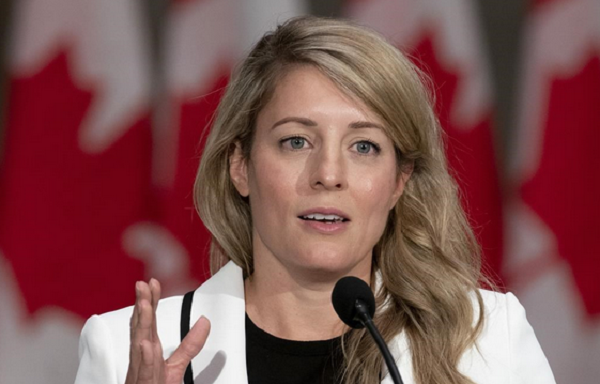Real estate slump deepened, roils US$1.24 trillion Canadian funds
Almost no major Canadian pension manager has been spared.
The largest fund, Canada Pension Plan Investment Board, lost five per cent on its property portfolio in its last fiscal year as the commercial real estate slump deepened. For the Public Sector Pension Investment Board, the pain amounted to a staggering 16 per cent loss on those bets, the worst fiscal year performance for those investments since the global financial crisis.
With the property market upended by higher borrowing costs, Canadian pensions — known for their massive real estate businesses that were the envy of the investing world for years — are feeling the sting. And it’s leading at least four major funds to now drastically retool their operations.
“What’s worked famously well for the last 35 years may not work so well for the next five to 10,” Jo Taylor, chief executive officer of the $248 billion Ontario Teachers’ Pension Plan, said in an interview at Bloomberg’s Toronto office.
Taylor’s fund is grappling with the worst four-year run at its real estate operation since it was transformed by the acquisition of a business called Cadillac Fairview in 2000. That company came to be one of the fund’s crown jewels and the single biggest in its portfolio. But last year, Taylor took authority for most future real estate investments away from Cadillac Fairview and brought them in-house, just like the plan’s other asset classes.
The second-largest Canadian plan, Caisse de Depot et Placement du Quebec, lost 6.2 per cent on real estate bets in fiscal 2023, the worst since the pandemic hit three years earlier. In January, the fund said it would combine that real estate business with another specializing in lending against properties, a merger that’s expected to save the plan $100 million annually.
The reorganizations change an approach that had made Canada’s pension funds powerhouses in the property market. Despite managing just six per cent of global pension assets, Canadian funds are responsible for 60 per cent of the total value of private real estate deals that directly involve a pension, according to research from CEM Benchmarking and Sebastien Betermier at Montreal’s McGill University.
Cadillac Fairview, for instance, played a leading role expanding Toronto’s financial district and came to control many of Canada’s top-performing shopping malls.
The move to more streamlined and centralized structures amounts to a blueprint for how some of the world’s most prolific property buyers think the game has changed. Real estate investing has become tougher as higher interest rates pummeled valuations and lenders pulled back. It’s also a recognition that the asset class has become more global and more niche, with tighter margins, and stiffer competition from other types of investments.
“The real estate sector is changing dramatically,” said Jim Clayton, a professor at Toronto’s York University. “At the same time, we now have this structural shift in the way we work and live which has sped up post-Covid. So I think you have people really rethinking what real estate is.”
That’s leading to changes in how the Canadians funds invest as well as what they bet on. CDPQ is now looking to do more of its real estate investing with co-investors or through third-party managers, rather than handling it all on its own, according to people familiar with the matter who asked not to be identified citing private information.
“You have a few pension funds asking themselves right now, should I continue to go as direct or actually take a step back?” said Betermier, the associate professor of finance who studies Canada’s pension funds at McGill.
His research shows that the Canadian funds’ huge real estate companies help them capture bigger margins than competitors that rely on middlemen, but they also make the Canadian funds less nimble — they can’t easily shift money into other types of assets.
“Whenever you are deep into one subsidiary, you lose a little bit of flexibility because you are dependent on one particular asset class or one set of skills, as opposed to a capital allocator that might be more nimble,” he said.
Nimble investing
Being flexible in real estate investing has also become more important as more niche building types such as warehouses, life science buildings and data centers emerge as some of the better-performing properties. Canadian pensions have invested in a range of those assets, with many working to pile more money in.
But it can be tough to be nimble when the office and retail properties hit hardest by the shift to remote work and online shopping still make up such a large part of the funds’ legacy portfolios. CPPIB has sought to pull back from some office bets, selling stakes in three properties at steep discounts recently, including a deal to offload one in Manhattan for just US$1. Those efforts helped shrink the plan’s office exposure to six per cent of real assets at the end of March from nine per cent a year earlier, according to its annual report.
For many years, Ontario Teachers focused heavily on Canada through Cadillac Fairview. The pension now wants to focus its bets outside its home market, a move that the CEO, Taylor, argued is easier done from within the larger fund rather than through the real estate company.
“There are probably more decisions to reflect on, in terms of what we invest in next than perhaps what we’ve done in the past,” Taylor said. “Raising debt for real estate is without question more difficult than it has been. The input cost of building a property as opposed to buying a property has changed in terms of what it costs to get product. You look at real estate through a carbon lens, it’s different.”
Some funds are using the opportunity to cut back on their property exposure overall. Real estate bets made up about eight per cent of CPPIB’s investments in its fiscal 2024 year, compared with 12 per cent five years ago.
“We have other asset classes coming into the portfolio,” CPPIB’s CEO John Graham said in an interview. “Credit would be one of them. Energy would be another portfolio we want to continue to grow. And infrastructure is one that we’ll look to kind of modestly grow out over the next few years.”
Staying the course
The Ontario Municipal Employees Retirement System — which helped create New York City’s Hudson Yards — is among the pension funds staying the course with real estate.
Blake Hutcheson, the fund’s CEO, said it’s aiming to hold onto its office properties. The buildings have continued to generate good income but were hit by losses because appraisers marked down their values, he said. The fund’s overall real estate portfolio slumped 7.2 per cent last year.
Hutcheson said Omers already works with its real estate subsidiary, Oxford Properties, the same way it does with the teams investing in any other asset class. He interprets the organizational changes going on at some of the other Canadian pensions as efforts to more closely integrate their real estate operations with their main funds.
“We don’t give them money and say, ‘Go spend it.’ They go through the exact same process as our private equity business and the like,” he said. “So the synergies that the others hope to achieve, we’ve been achieving for decades.”
This article was first reported by BNN Bloomberg












